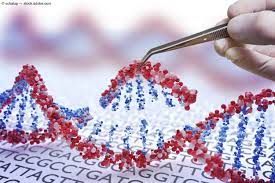Article
4D Molecular Therapeutics announces first patient dosed in Phase 1/2 Clinical Trial of 4D-150
Author(s):
According to the company, 4D-150 is a dual-transgene, intravitreal gene therapy designed to inhibit four distinct angiogenic factors to prevent angiogenesis and reduce vascular permeability for the treatment of wet AMD.

4D Molecular Therapeutics Inc. (4DMT) announced that the first patient has been dosed in the Phase 1/2 clinical trial of 4D-150 for neovascular age-related macular degeneration (wet AMD).
According to the company, the Phase 1/2 clinical trial is a dose-escalation and randomly assigned, controlled, masked expansion trial of intravitreal 4D-150 and is expected to enroll approximately 60 adults with wet AMD.
“The dosing of the first patient in the 4D-150 Phase 1/2 clinical trial in wet AMD marks an important milestone for our company and for the patients we aim to serve,” David Kirn, MD, co-founder and CEO of 4DMTm said in a statement. “4D-150 is a dual-transgene intravitreal gene therapy incorporating the R100 capsid which we invented through our proprietary Therapeutic Vector Evolution platform.”
In the dose-escalation phase, multiple dose levels of 4D-150 will be examined in an open-label, 3+3 design with an initial dose of 3E10 vg/eye. In dose expansion, patients (n = 50) will be randomized 2:2:1 to receive one of 2 dose levels of 4D-150 (n = 20 for each dose level) or aflibercept (n = 10). The primary endpoints of the study are safety and tolerability.
Secondary endpoints include the number of supplemental aflibercept injections received and change from baseline in best corrected visual acuity (BCVA) over time.
The company noted that 4D-150 is a dual-transgene, intravitreal gene therapy designed to inhibit four distinct angiogenic factors to prevent angiogenesis and reduce vascular permeability for the treatment of wet AMD.
Efficient intravitreal delivery to the retina of a payload expressing two transgenes that inhibit four distinct angiogenic factors has the potential for greater efficacy and/or lower required doses versus therapies that target a single VEGF factor, including in patients refractory to currently approved anti-VEGF therapies.
“We believe that 4D-150’s design, which targets four distinct angiogenic factors with dual transgenes, has the potential for broad, robust and durable efficacy after a single low dose intravitreal administration in patients with wet AMD,” Robert Kim, MD, senior vice president and Ophthalmology Therapeutic Area Head of 4DMT, said in a statement.
Intravitreal delivery of biologics to the eye is routine, and a single dose intravitreal gene therapy that could provide long-term efficacy in patients would be an advantage for patients who struggle with treatment burden and/or treatment resistance. 4D-150 builds on the tolerability to date of the proprietary R100 capsid in the 4D-125 XLRP clinical program at doses up to 1E12 vg/eye. In the non-human primate retinal laser-induced CNV model data presented in May 2021 at the annual conference of the American Society of Gene and Cell Therapy, at doses ranging from 1E11 to 1E12 vg/eye, 4D-150 intravitreal injection resulted in 100% suppression of high grade angiogenic lesions (grade 4).
Newsletter
Don’t miss out—get Ophthalmology Times updates on the latest clinical advancements and expert interviews, straight to your inbox.





